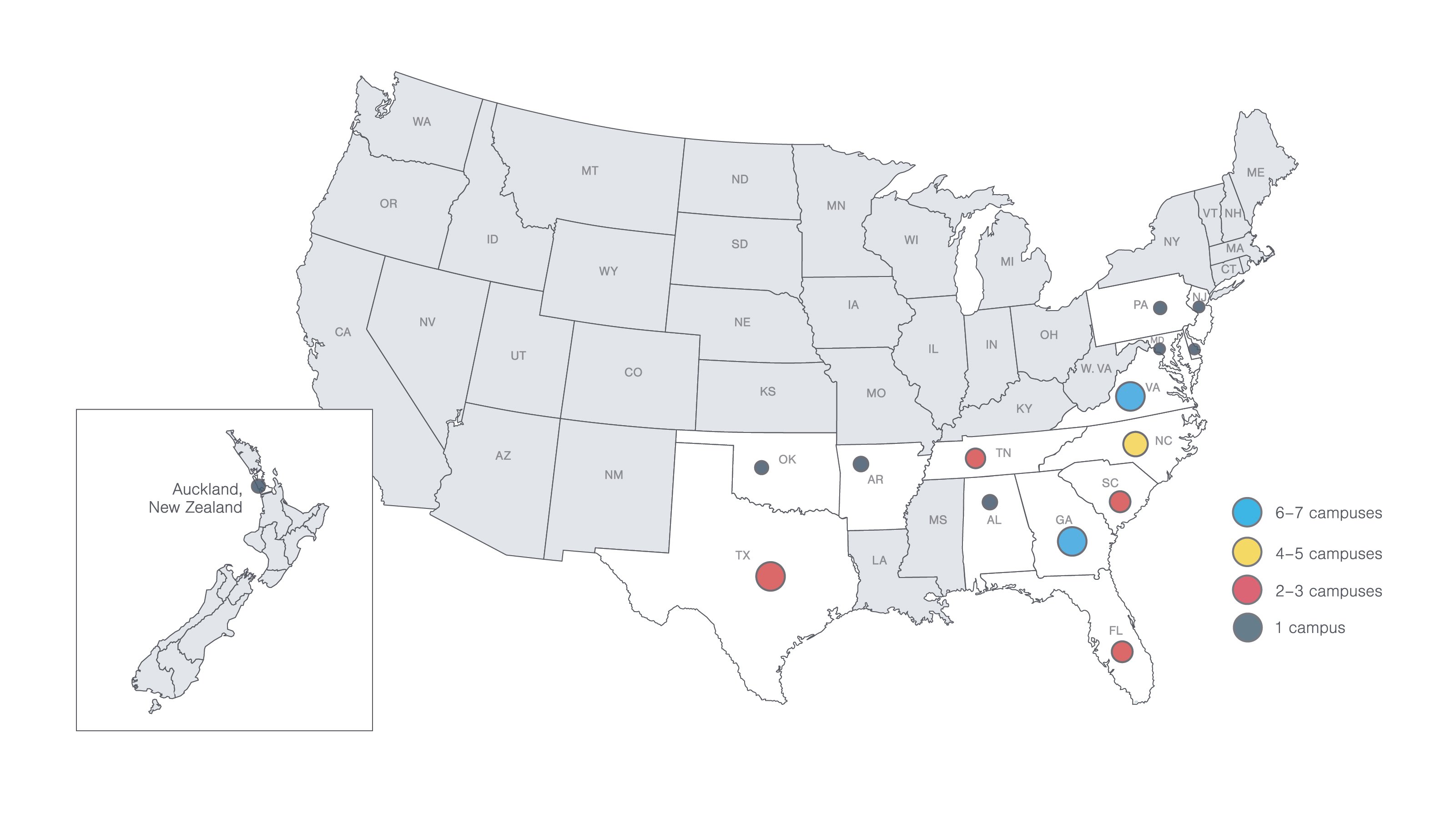Associate in Arts Information Technology
PROGRAM AT A GLANCE
Why get an AA in Information Technology from Strayer?
The AA in Information Technology can help you gain critical thinking skills and learn about the technology, tools and infrastructure needed for business success. What’s more, you’ll be taught by established professionals who can connect what you learn in the classroom to the real world.
Take the first step toward an IT profession
With an associate degree in information technology, you could embark on potential career opportunities in the dynamic and ever-growing field of IT. You’ll learn the skills needed to help design, implement and evaluate computer-based systems, programs and processes. Examine the professional, ethical, legal and security issues related to the field while harnessing essential skills business value.
Skills you’ll learn with a Strayer Associate in Arts, Information Technology
A Strayer degree can help prepare you for career opportunities in IT while offering support, flexible learning options and career planning every step of the way.
- Apply basic business management skills in the public and private sectors.
- Locate, evaluate and solve business problems with technology.
- Design, implement and evaluate computer-based systems, processes, components and programs.
- What can you do with an associate degree in IT: Understand the professional, ethical, legal and security issues related to technology.
- Analyze the impact of computing on individuals, organizations and society.
- Identify and include user needs in the selection, creation, evaluation and administration of technology.
Earn your degree from an accredited university
Strayer University is an accredited institution and a member of the Middle States Commission on Higher Education (MSCHE or the Commission) www.msche.org. Strayer University’s accreditation status is Accreditation Reaffirmed. The Commission’s most recent action on the institution’s accreditation status on June 22, 2017 was to reaffirm accreditation. MSCHE is recognized by the U.S. Secretary of Education to conduct accreditation and pre-accreditation (candidate status) activities for institutions of higher education including distance, correspondence education, and direct assessment programs offered at those institutions. The Commission’s geographic area of accrediting activities is throughout the United States.

Associate in Arts in Information Technology cost breakdown
- 20 courses, $1525 per course
- $65 technology fee each term
- $150 one-time degree conferral fee
- Additional costs for textbooks and supplies
Estimate the cost of your degree
How much can I save on a AAIS?
Estimate the cost of your degree
How much can I save on a AAIS?
Expected Graduation
...
Approximate Total
...
*Student is required to take two courses per quarter during disbursement period
PREPARING YOUR RESULTS
Time commitment
Calculate the approximate time commitment of your degree.
| Course load | ... courses/term |
| Classroom time | ... hours/week |
| Terms per year | ... terms |
| Terms to graduation | ... terms |
Cost analysis
Calculate the approximate cost of your degree
| Tuition | ... |
| Books | ... |
| Fees | ... |
| No-cost gen ed | $0 |
| Transfer credits | ... |
| Transfer Credit Scholarship | $0 |
| $4K scholarship | $0 |
| Strayer Learn and Earn Scholarship | $0 |
| Approximate total | ... |
Explore courses in Strayer’s Associate in Arts in Information Technology program
Build a strong foundation in the technologies that keep modern organizations running smoothly and effectively. In this program, you’ll explore state-of-the-art information technology systems and concepts while developing a broad understanding of the skills and competencies needed to support them. Upon graduation, you may apply all credits earned toward Strayer’s Bachelor of Science in Information Technology program.
Associate in Arts in Information Technology Courses
- BUS 100 Introduction to Business
- CIS 106 Introduction to Information Technology
- CIS 109 Introduction to Management Information Systems
- CIS 110 Computer Programming Design
- CIS 111 Introduction to Relational Database Management Systems
OR
Complete your degree from where you live, on your time, in a flexible, 100% online program. Using our online portal, you’ll be able to:
- Access lectures and coursework
- Complete assignments and exams
- Communicate with professors and classmates
- Access student resources and support
From day one, you’ll have a team of advisors and coaches to help you balance college, work and your personal life. Tap into support resources online or at a campus near you.
You’ll have access to:
- Admissions and enrollment support
- One-on-one academic coaches
- Financial guidance and potential cost savings
- Career planning services
The faculty at Strayer University bring years of real-world industry experience to the classroom, offering valuable insight and practical knowledge. They are committed to supporting your professional goals and are responsive to questions and concerns through the virtual courseroom.
How to apply for an Associate in Arts degree at Strayer?
An admissions officer can help you choose the right program, register for classes and transfer credits.
Here’s what you’ll need to get started:
A completed application and enrollment agreement
A high school diploma or equivalent
A valid, current and legible government-issued photo ID
Winter classes start on January 5
Learn more about Strayer University’s admissions process.
Transferring to Strayer from another university?
Transfer up to 14 eligible classes from a prior college or university to your associate in arts degree, saving time and money.
Strayer welcomes international students
Strayer University is proud to have hosted more than 4,000 international students from over 143 countries. Earn your degree in the U.S. or completely online in your home country – it’s your choice.


Campus locations
Come to a campus near you for guidance and support. You’ll have access to helpful resources, a supportive community and plenty of spaces to learn and grow.
Ready to take the next step?
Your admissions officer is here to guide you through every step of the process, from completing your application to choosing your concentration.
Experience the Strayer difference
Start-to-finish support
Your admissions officer and student services coach will motivate and support you from enrollment to the day you graduate.
A real student community
Experience online and live discussions, receive mentoring, expand your professional networks and create life-long friendships.